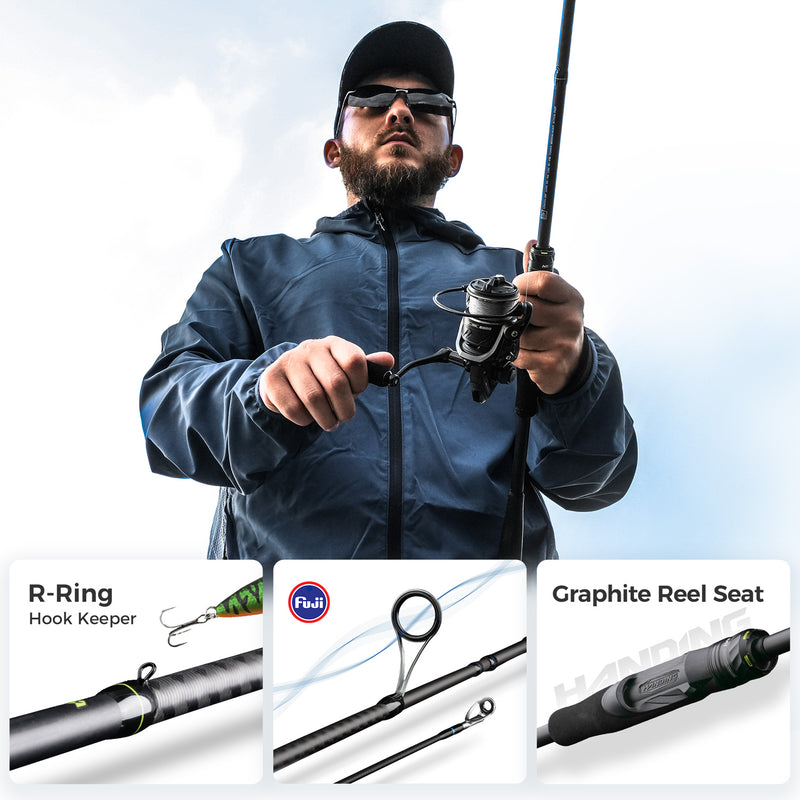Unlock the Secret to Finding Your Perfect River Fishing Rod!
Selecting the right fishing rod for river fishing is crucial for both successful catches and enjoyable experiences on the water. A well-suited rod can make all the difference, influencing not just the number of fish you reel in but also your overall satisfaction during your fishing trips. Whether you're casting for trout in a gentle stream or targeting larger species in a swift-flowing river, the right rod amplifies your skills and enhances your connection with nature. This article aims to guide you through the essential aspects of choosing the best rod for river fishing, comparing your options, and making an informed decision tailored to your unique needs and budget.

Understanding River Fishing Rods
When it comes to river fishing, not all rods are created equal. A suitable fishing rod for rivers generally exhibits specific characteristics that cater to the unique conditions found in flowing waters. Length is one of the primary factors; most river rods range from 6 to 9 feet, allowing for longer casts and better control over the line. Action, or the way a rod bends, is another crucial aspect. Fast-action rods bend primarily at the tip, providing greater sensitivity and quicker hook sets, while slow-action rods flex more throughout the length, offering a softer touch. Power, which refers to the rod’s resistance to bending, is also vital; light to medium power rods are typically favored for their versatility. Additionally, the material and construction of the rod significantly influence its durability, weight, and responsiveness, making it essential to consider these factors when selecting your river fishing rod.
Key Features to Consider
When choosing the best rod for river fishing, several key features should be on your radar. First and foremost is the length of the rod, which affects casting distance and control. A longer rod can help you cast further and manage line better in current. Weight plays a significant role as well; a lightweight rod can reduce fatigue during long fishing sessions, while heavier rods may offer more power for larger fish. Sensitivity is another critical feature; sensitive rods allow you to feel subtle bites, enhancing your chances of a successful catch. Durability should not be overlooked either, as river environments can be harsh on gear. Opt for materials like graphite or fiberglass, which provide a good balance of weight and strength. Each of these features contributes to your overall fishing experience, so it’s worthwhile to assess how they align with your fishing style.
Price Range Analysis
The price range for river fishing rods can vary significantly, often reflecting the quality and features of the rod. Budget options typically range from entry-level prices, offering basic functionality for beginner anglers, to mid-range options that provide better materials and enhanced performance. At higher price points, you can expect premium rods crafted from advanced materials, featuring superior sensitivity and durability. It's essential to understand what you can expect at different price levels; while a cheaper rod can be suitable for casual fishing, investing in a mid-range or high-end rod can yield dividends in performance and longevity. Striking a balance between cost and quality is vital; consider how often you'll fish and the types of fish you're targeting to determine the right investment for your needs.
Comparing Options
When it comes to comparing different river fishing rods, having a structured approach can save you time and ensure you make an informed decision. Start by examining reviews and user feedback, as these can provide insights into the performance and reliability of various rods. Look for detailed product specifications, paying attention to the rod's length, action, and power to ensure they match your fishing style. If possible, try to get hands-on experience by visiting local tackle shops or fishing expos, where you can test different rods and feel their weight and action firsthand. This tactile experience can greatly influence your choice, allowing you to find the rod that feels right in your hands.
Making an Informed Choice
In summary, selecting the right rod for river fishing involves understanding the unique characteristics that cater to the conditions of flowing waters. By considering key features such as length, weight, sensitivity, and durability, you can ensure a rewarding fishing experience. Additionally, analyzing price ranges and effectively comparing options will help you make an informed choice that aligns with your needs and budget. Take your time with this important decision—the right rod can significantly enhance your fishing adventures, leading to more successful outings and cherished memories on the river.








